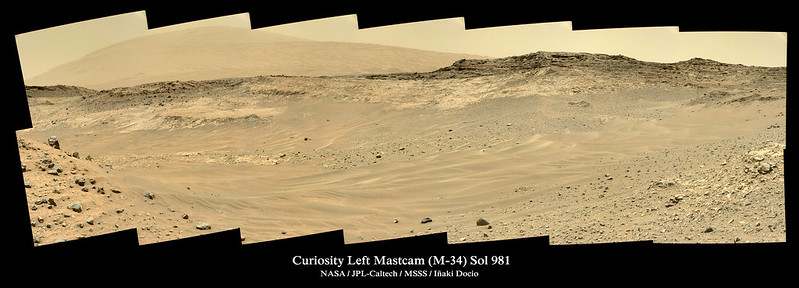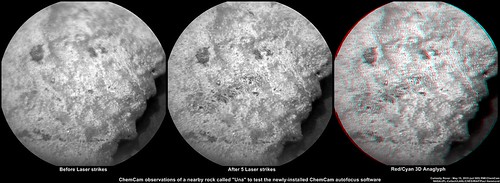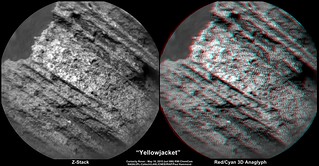Looking closer I can def see the disturbances from the rover, but not sure it looks like wheel tracks
If you're trying to figure out what's going on in some mastcam view of the foreground, remember that there's normally good coverage of the foreground with navcam, normally on the sol they arrived at the site. So in this navcam view you can see the ground covered in the M100 view you linked to, and you can see by the tracks that indeed they did drive over those rocks:
http://mars.jpl.nasa.gov/msl-raw-images/pr...NCAM00354M_.JPG







